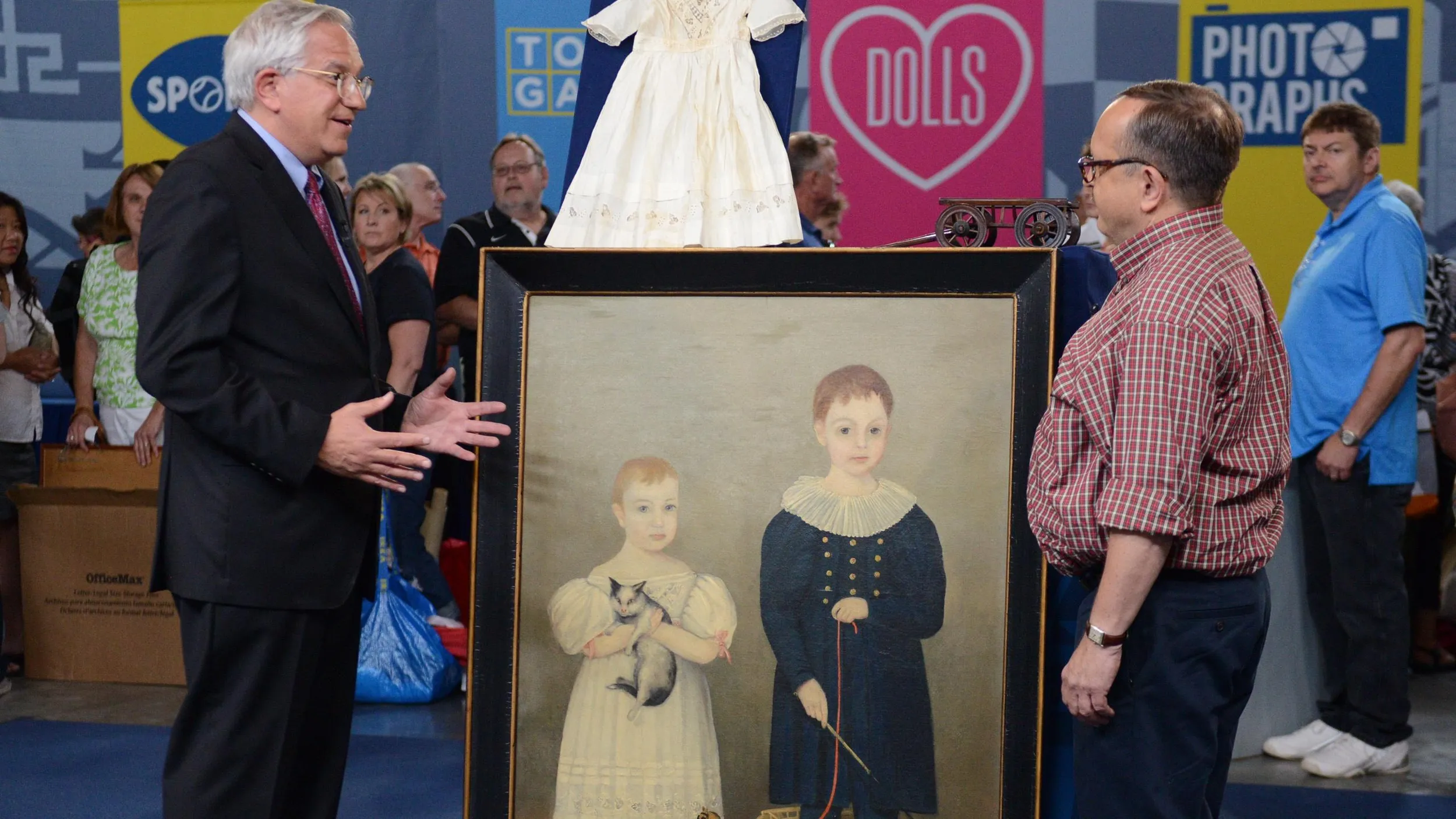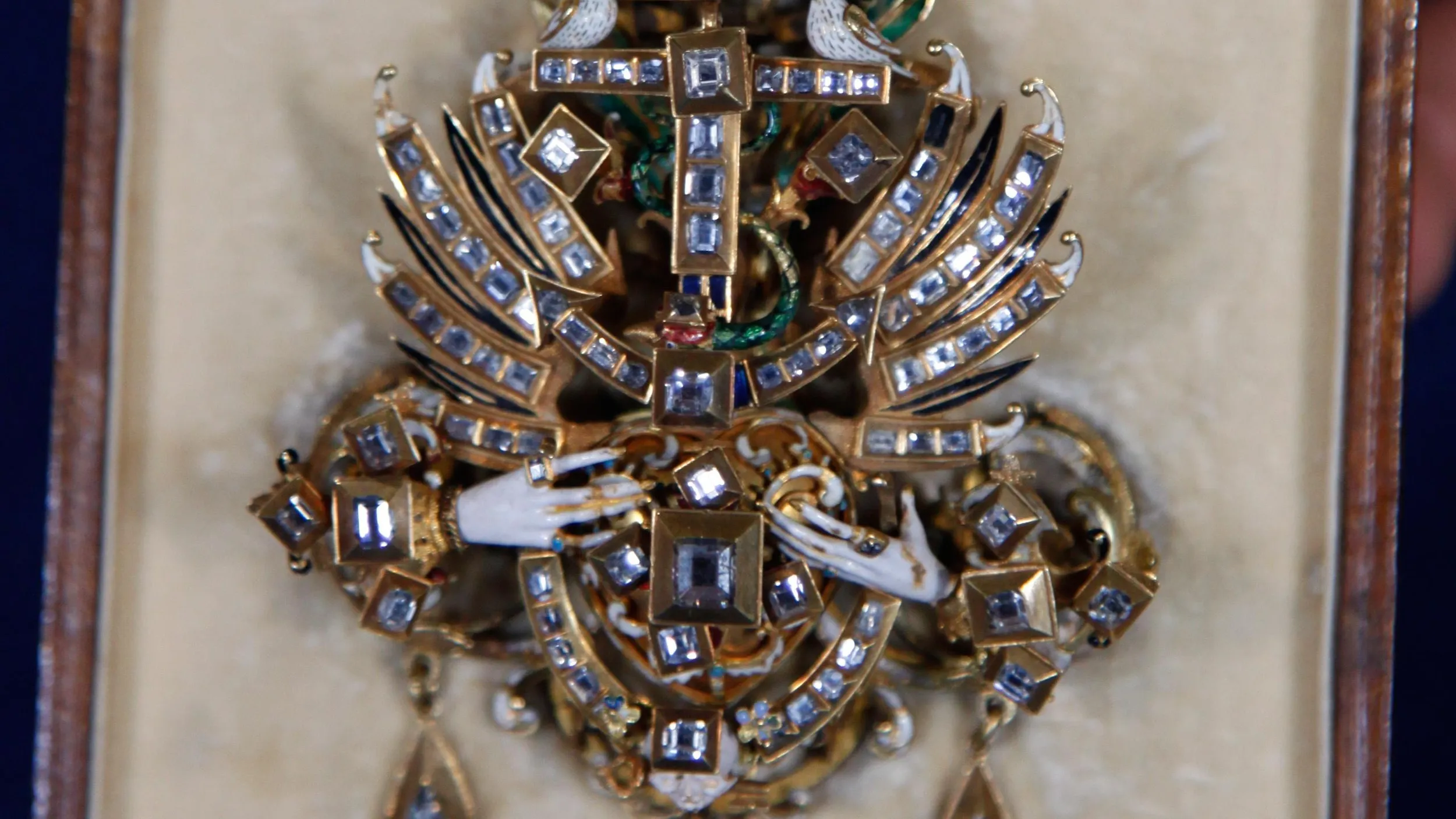GUEST: This has come down through my family, which is originally from the Pittsburgh area since the time that Pittsburgh was even founded, and I think I might be the fifth or sixth generation that has had it. It came through my mom's side of the family. Way back, we had some maiden aunts whose dad was a financier in Pittsburgh. It came through them, and they called it a hot chocolate set.
APPRAISER: And do you know who made it or where it's from?
GUEST: No, my grandmother always told me it was Sèvres.
APPRAISER: First of all, we look at the mark on the bottom, and right here on the bottom, we have the word "France," so we know where it's from, it's from France.
GUEST: Okay.
APPRAISER: And then above that is a Sèvres mark, but actually, it is a Sèvres-style mark. And almost everything that is marked with a Sèvres mark was not actually made by Sèvres.
GUEST: Okay.
APPRAISER: In this case, this particular set was not made by Sèvres. We don't know who made this set, but it kind of doesn't matter. Now, because it says the word "France," we know it was made after 1891, so this is probably 1890s, 1910. It is exceptionally good quality. I mean, this is magnificent in terms of quality. Fantastic. And it would seem strange that someone would manufacture something with a fake mark that is such high quality. You'd think they'd want credit for it.
GUEST: Exactly.
APPRAISER: All of the scenes are entirely hand-painted on it. All of the gold detailing, which is raised, which is a much more expensive process than flat, is all done by hand. And some of the backgrounds are iridescent…
GUEST: Yeah!
APPRAISER: … and around the turn of the century, that was kind of a new thing. It's iridescent like Tiffany glass iridescent. And so that was very popular in this time period. And you've got several different colors of iridescence in the design, so that's another thing that helps date it. Now, it really doesn't look that much like what real Sèvres made. The shapes are similar, but not exactly. Now, this particular color in French porcelain is usually called rose pompadour, which is a term that Sèvres originated, with the pink rose color. And what we would call this is a cabaret. Someone could have certainly served whatever they wanted to in it, but probably what they did was put it on display.
GUEST: Right, right.
APPRAISER: Now, your family that originally had it, did they have much money?
GUEST: They were very wealthy. They were early in the steel industry in Pittsburgh, they were contemporaries of the Fricks and the Carnegies, and they traveled, all that whole early 1900s lifestyle that you see on Downton Abbey. I think they were very much like that.
APPRAISER: Right, well, that is no surprise because the quality is so high. When this was new, around 1900, this would have been some of the most expensive porcelains that you could have bought.
GUEST: Get out!
APPRAISER: It would have cost an immense amount of money. Certainly, they could have bought it in France or in travels, but they could have bought it at the best stores in Pittsburgh or Boston or New York.
GUEST: Right.
APPRAISER: Now, despite the fact that it was not actually made by Sèvres, it still has really nice value, and in today's market, I would think that a retail value for this set would be between $5,000 and $7,000.
GUEST: (voice breaking): Thank you, that's great.
APPRAISER: It is a nice set.
GUEST: Thank you.












